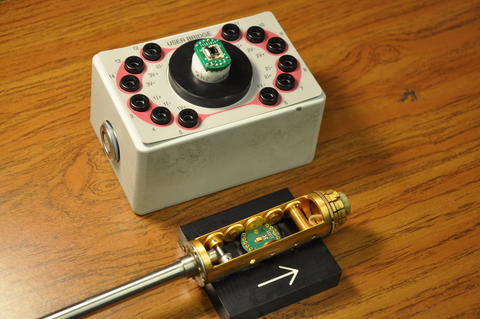A team of physicists at the UC Riverside and the UC Santa Barbara has discovered an electrical detection method for terahertz electromagnetic waves. This is the first time a scientific team claims to have managed to do that using equipment of small size, and it could potentially open the way to accelerated progress in the field. Terahertz radiation is somewhere in the middle between microwaves and infrared light, with a wavelength range of 3 mm to 30 μm. This type of radiation can be used as a better alternative to X-rays for imaging, or for layer inspection and material characterization. However, no practical technologies detecting THz radiation exist yet, and thus engineers have come up with the term “Terahertz gap” which characterizes the problem.
The team figured that since it’s so hard to detect the Terahertz radiation directly, they should explore a way to do so indirectly, after converting it to something that easier to measure. They did this by generating a beam of 0.24 terahertz to pump up a magnetic resonance in chromia, generating a spin current in an antiferromagnet. Each electron spin has an angular momentum that precesses around a vertical axis. Using this precession frequency, the scientists matched it with electromagnetic waves coming through a generator, creating a magnetic resonance that is the final product of the detection.
While this is an indirect method of detection, it’s still very useful from a practical and technical perspective. Also, it doesn’t require large equipment (a chip would be enough), and neither an extended period of time to take a reliable measurement. The teams from the Californian universities are not the only ones working feverishly on the field of spintronics and terahertz radiation, but they may be the first to have something substantially promising to present to the world.
Image by (UCR/I. Pittalwala)






